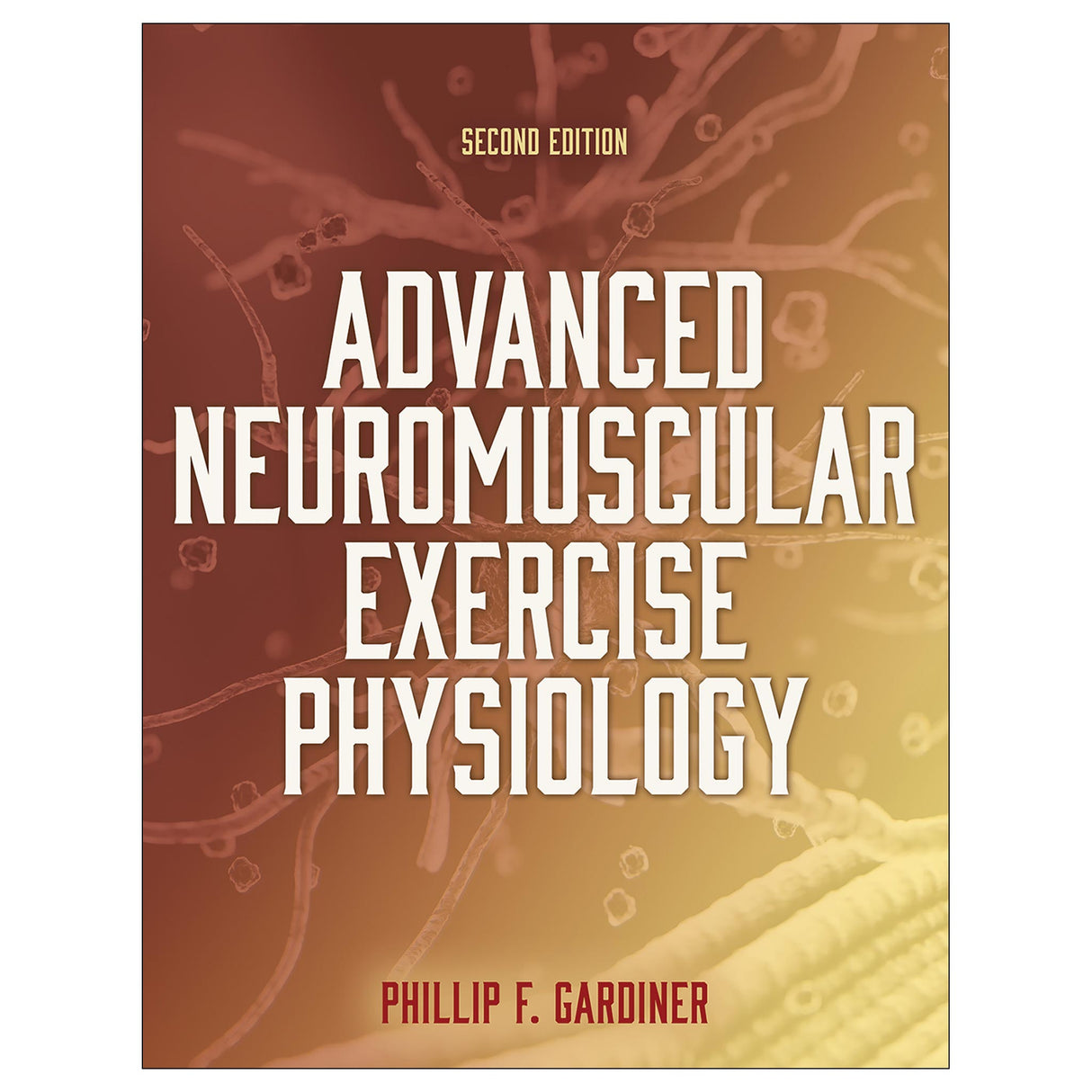Advanced Neuromuscular Exercise Physiology-2nd Edition
Author: Phillip Gardiner
$166.95 CAD
Advanced Neuromuscular Exercise Physiology, Second Edition, offers readers a foundation of knowledge while detailing the most recent findings in the rapidly changing field of neuromuscular exercise physiology. It simplifies complex concepts with illustrations and graphs—including 20 new figures—all showcased in a new larger format to help students visualize and better understand the material. A new chapter on clinical considerations has been added, focusing on conditions that involve a compromise in the neuromuscular mechanisms necessary for movement. Other chapters have been updated with new or expanded content, including the following topics:
- Blood flow restriction during exercise as a training method
- The influence of pain on motor unit recruitment
- Surface EMG signals and the role that high-density surface EMG has played in motor unit recruitment research
- Updates on the role of the motoneuronal initial segment in the activation and adaptation of motoneurons
- An exploration of the “onion skin” pattern and neuromechanical matching for an explanation of motor unit recruitment
- The role of exerkines and small extracellular vesicles in adaptation to exercise
Chapter objectives have been added to the text to provide a road map for the readers, and new review questions help students assess their understanding of the content. Chapter summaries recap the key issues presented for each topic. Analyses of research findings and research applications are highlighted in special sidebars. Throughout the text, practical examples help readers engage with the content.
Within the dynamic field of neuromuscular exercise physiology, ideas of how nerves and muscles collaborate during acute and chronic exercise are continually evolving. Advanced Neuromuscular Exercise Physiology, Second Edition, offers an authoritative perspective of current research in the field as it seeks to encourage discussion, further study, and new research directions.
Audience
Upper-level undergraduate- and graduate-level students in exercise physiology courses; also a reference for researchers and professionals in exercise science and health-related fields.Muscle Heterogeneity
Orderly Motor Unit Recruitment
Smaller Motoneurons Are More Excitable
Membrane Resistivity and Motoneuron Size
Other Factors Determining Action Potential Generation
Minimal Firing Rates and Afterhyperpolarization Durations
Motoneuron Current–Frequency Relationship and Excitability
Spike Frequency Adaptation
Motoneuron Persistent Inward Currents (PICs)
Summary
Chapter 2. Motor Unit Recruitment During Different Types of Movements
Measuring Human Motor Unit Recruitment
Influence of Task
Synergists
Influence of Pain on Motor Unit Recruitment
Slow-Ramp Isometric Contractions
Maintained Isometric Contractions
Isometric Contractions in Various Directions
Isometric Contractions Versus Movements
Ballistic Contractions
Lengthening Contractions
Cocontraction of Agonists and Antagonists
Unilateral Versus Bilateral Contractions
Maximal Voluntary Contractions
Muscle Histochemistry to Investigate Rhythmic Complex Contractions
Summary
Chapter 3. Muscle Blood Flow and Metabolism
Muscle Blood Flow
Muscle Metabolism
Summary
Chapter 4. Peripheral Factors in Neuromuscular Fatigue
Fatigue as Interference With the Contractile Machinery
Failure of Impulse Propagation Along the Muscle Fiber Membrane
Peripheral Fatigue Sites Other Than Muscle Membrane and Contractile Machinery
Research From Animal Experiments
Summary
Chapter 5. Central Factors in Neuromuscular Fatigue
Motoneuron Activity During Sustained Contractions
Isometric Versus Anisometric Tasks
Rotation of Motor Units?
Summary
Chapter 6. Muscular Mechanisms in Aerobic Endurance Training
Chronic Muscle Stimulation
Coordination of Muscle Protein Systems
Pretranslational Control
Translational Control
Posttranslational Modifications
Mitochondrial Responses
Simultaneous Expression of Isoforms
Adaptations Can Occur Ex Vivo
Adaptations Appear in a Specific Sequence
Thresholds of Activity for Adaptation
Chronic Stimulation and Atrophy
Metabolic Signals and the Adaptive Response
Degenerative and Regenerative Processes
Summary
Chapter 7. Neural Mechanisms in Aerobic Endurance Training
Adaptation of the Neuromuscular Junction
Responses of Motoneurons
Adaptations of Spinal Cord Circuits
Summary
Chapter 8. Muscle Molecular Mechanisms in Strength Training
Acute Responses in Protein Synthesis and Degradation
Connective Tissue Responses
Role of Muscle Damage
Role of Dietary Supplements
Summary
Chapter 9. Muscle Property Changes in Strength Training
Increased Muscle Fiber Cross-Sectional Area
Fiber Type Composition
Muscle Fiber Number
Muscle Composition
Muscle Architecture
Muscle Fiber Ultrastructure
Tendons
Evoked Isometric Contractile Properties
Changes in Muscle Force, Velocity, and Power
Fatigue Resistance
Role of Eccentric Contractions
Concurrent Resistance and Aerobic Training
Summary
Chapter 10. Neural Mechanisms in Strength Training
Gains in Strength Versus Muscle Girth
Strength Gains Show Task Specificity
Surface EMG Response During MVC
Imaginary Strength Training
Reflex Adaptations
Cross Education
Decreased Activation of Antagonists
Changes in Motor Unit Recruitment
Changes in Motor Cortex
Summary
Chapter 11. Clinical Considerations Concerning Neuromuscular Exercise and Training
Effects of Exercise on Neuromuscular Aging
Effects of Exercise Training in Stroke Patients
Physical Activity and Fibromyalgia
Exercise and Dementia
Amyotrophic Lateral Sclerosis
Summary
Muscle blood flow during exercise
Relationship between exercise and dementia
All ancillaries are free to adopting instructors through HKPropel.
Test package. Contains a bank of 25 questions per chapter in true-false, fill-in-the-blank, essay and short-answer, and multiple-choice formats. The files may be downloaded for integration with a learning management system or printed for use as paper-based tests.
Image bank. Includes most of the figures, content photos, and tables from the text, sorted by chapter. These can be used in developing a customized presentation based on specific course requirements.





